Faraday Future Sets up Headquarters in China, Promises New Models and 5 Million Cars By 2028
Evergrande Health Industry Group Ltd, which owns a 45 percent stake in U.S.-based Faraday Future, said Tuesday that the electric vehicle startup has officially moved its headquarters to China. The group claims Faraday now plans on building five R&D and production facilities across the country over the next decade.
The intended goal is to have the startup reach an annual production capacity of 5 million vehicles within 10 years and launch multiple “premium to entry-level segments for the global auto market, to build an internet-based intelligent mobility ecosystem,” Evergrande said.
It sounds a little premature for a company that managed to evade certain death by the skin of its teeth — and only just snagged a manufacturing facility — a few months ago.
Maker of Odd-looking Three-wheeled Car Heads to NASDAQ
A small automobile company headquartered in a city with outrageous house prices wants you to buy shares. Electra Meccanica Vehicles Corp., the Vancouver-based builder of three-wheeled electric vehicles, has announced its listing on the NASDAQ.
The company’s $10 million public offering went live Thursday, listed as SOLO (common shares) and SOLOW (warrants). As you probably figured, Electra Meccanica calls its vehicle the “Solo,” which, as you also probably figured, carries a single occupant.
Looking like all three-wheelers do (strange), the Solo targets the cost-conscious commuter.
Porsche Drops Technical Specs for Electric Taycan
Electric cars are a polarizing matter among automotive enthusiasts. While a small group of ardent EV loyalists exist, a large portion of car people look at them with varying levels of contempt. However, let’s not kid ourselves, electrification is an inevitability. Even if EVs don’t proliferate like rabbits in springtime, standard powertrains will continue to evolve and electric automobiles will account for some of the most extreme performance models on the road.
We’ve already seen what Tesla can do if given enough money. The Model S P100D can already hit 60 mph in just over 2 seconds — putting extravagantly priced, flamboyant supercars to shame.
More vehicles are coming to fit this mold. Porsche has been working on a rival for Tesla’s sedan for a while now, and recently released the specs. While the Germans seem to have developed a strong performer, ready to feed plenty of internal combustion vehicles a crow supper, it doesn’t appear to be quite as fast as Tesla’s best. Either that, or Porsche is downplaying the Taycan’s (formerly the Mission E) technical specifications.
The More You Know: There Are at Least 487 Electric Vehicle Manufacturers in China Right Now
We’ve mentioned Chinese startups working on electric vehicles in the past. You’ve got the American-based (but Chinese-owned) Faraday Future that couldn’t pay its bills, its big brother LeSEE (which is facing similar troubles), the performance-focused NIO, the luxury-minded Byton, the German-named Weltmeister, and a handful of others making ink every so often.
While EV startups from other countries (Tesla, Rimac, etc.) garner their own headlines, it’s more common to see a Chinese startup angling for media exposure as of late.
Of course, established automakers are busy setting up their own electric divisions to fulfill the nearly absent Western consumer demand for EVs. They’re gambling on a future where electrification replaces internal combustion, but nobody is betting more on “green” than China. As of today, it’s estimated that the country has 487 electric car companies, and the nation feels this still isn’t enough. Holy shit.
More Power Awaits Buyers of the Long-range Nissan Leaf
Many years ago, back when full-on electric cars were rare oddities, I drove an early first-generation Nissan Leaf in power-sapping Eco mode. It was, to this day, the slowest vehicle I have ever driven. The driver of a 1980s Tercel with a three-speed automatic could have handed me my ass in a stoplight drag race.
That was then, and this is now. The second-gen Leaf, which bowed for 2018, offers buyers 142 horsepower and a generous helping of low-end electric grunt to go with their 151 miles of range. But there’s another beast arriving for 2019 that should satisfy those looking for more miles and more horses.
QOTD: Who Should Pay for Your New Car?
As comedian and secret smart guy Norm Macdonald states during his standup routines, “Now, I don’t want to get political, but…”
Of course, Norm then trails off into a topic that’s completely removed from politics, like waiters using a sexualized tone while describing succulent desserts. I’ll keep it toned down here, lest an uproar ensues. From time to time, the actions of governments raise questions pertaining to vehicles that we can discuss without freaking out, and this happens to be one of those times.
Anyway, it turns out I’ll no longer be paying for a minute portion of someone else’s Tesla purchase.
Mr. Musk Goes to China, Vehicles to Pour Forth
Tesla’s sole assembly plant in Fremont, California won’t be lonely for long. A preliminary deal reached between the automaker and the government of Shanghai could see a new assembly plant start production in about three years’ time. The Chinese plant would most likely build Model 3s and upcoming Model Y crossovers, Bloomberg reports.
Assuming Tesla can scrounge up the $4 to $5 billion needed to complete construction of the facility (a Goldman Sachs estimate), the plant could produce up to 500,000 vehicles per year. And it just so happens that Shanghai has a free trade zone.
As the Chevrolet Bolt's U.S. Sales Cool Off, GM Readies a Production Boost
As promised by General Motors CEO Mary Barra in March, GM plans to crank out additional Chevrolet Bolts at its Orion Assembly Plant in Michigan later this year. The need for extra output isn’t because of rising sales in the United States, however.
In GM’s second-quarter 2018 sales report, the Bolt’s U.S. tally fell to 3,483 vehicles, down from Q1’s 4,375 deliveries, as well as Q2 2017’s 4,500 units. Last year’s Q2 sales came when the Bolt hadn’t even reached all U.S. markets. No, GM needs more Bolts because other countries want them.
One Hell of a Ramp: Tesla Reports 28,578 Second-quarter Model 3 Builds, 18,440 Deliveries
The numbers are out for Tesla’s second-quarter production and deliveries. If you didn’t spend the weekend lying on a block of ice with a fan taped to your chest, you probably heard the faint sound of Tesla aficionados celebrating the automaker’s 5,000-Model 3s-per-week production goal, which was met with few vehicles to spare.
CEO Elon Musk took to Twitter on Sunday to announce the production of 7,000 vehicles during the last seven days of June, some 5,000 of them being Model 3 sedans. Steven Armstrong, CEO of Ford of Europe, shot back a reply stating his company builds that much in about four hours. (There seems to be a lot of bad blood between Ford and Tesla.)
So, how do the numbers break down for the entire second quarter? Read on.
Despite Saying 'No' to a (New) New Beetle, Volkswagen Hasn't Completely Closed the Door on the Idea
Last March, Volkswagen confirmed that once the current-generation Beetle runs its course, there won’t be another. It was thought — and hoped, for some VW execs — that the automaker would switch the iconic model to electric drive, thus keeping the brand’s heritage alive while at the same time fulfilling its promise to unleash scores of EVs into the marketplace.
Not so, it seems. “Two or three generations [of Beetle] is enough now,” said VW R&D chief Frank Welsch in an interview with Autocar. “You can’t do it five times and have a ‘New New New Beetle.’”
Well, that was spring, and this is summer. Apparently, VW hasn’t completely ruled out the return of the people’s car. Should the model stage a reappearance, however, prepare yourself for some sacrilegious changes.
2019 Chevrolet Volt: The Overlooked 'Electric' Wants You to Plug In More Often
It’s not a pure EV, but in the early part of this decade, Chevrolet’s Volt offered one of the few mass-produced electric driving experiences on the market. Now in its second generation, GM’s “extended-range electric vehicle” — which packs a 1.5-liter gas generator — has seen its status dwindle as all-electric competitors rivals sprout like dandelions (among them, the confusingly named Chevy Bolt). Lesser plug-in hybrids abound.
Though the Volt still represents an easy-to-live-with compromise between gas-fueled convenience and emission-free commuting, GM knows it needs to do something to sweeten the pot. Extending the range beyond 53 miles seems pointless. But what if the car could charge almost 50 percent faster?
Model 3 Pricing Changes and a Flurry of Tesla Pickup Promises Precede … What?
That’s the question being asked by a bevy of cynical journalists and industry observers after Tesla CEO Elon Musk regailed his Twitter audience with descriptions of the automaker’s upcoming pickup truck last night. How does a heavy-duty 240-volt power outlet sound? Self-levelling suspension? Hmm?
At the same time, Tesla’s Design Studio announced revised pricing for the dual-motor Model 3 and its Performance variant. Remaining Model 3 reservation holders were also told they would soon get the opportunity to configure their long-awaited vehicles.
Either the big tent’s working out just great and production is well on track, or there’s something investor-rattling coming down the pipe.
Jaguar Land Rover Mimics European Rivals, Promises an EV Version of Every Model - but Only If You Really Want It
Volvo wanted to bring the sometimes terrifying concept of an electric car out of the shadows and into the mainstream, so it promised fully electric versions of new models launched after 2019. These vehicles will supplement the brand’s hybrid and mild-hybrid offerings.
No longer will the electric car be a standalone model (or model line) with unfamiliar, oddball styling. Mercedes-Benz and BMW agree with this approach, to some degree. Others, like Volkswagen, do not.
Now, Jaguar Land Rover’s joined the fray. The British automaker just announced plans to boost investment by 26 percent over the next three years — an extra $18 billion — to create EV versions of its existing vehicles. That doesn’t mean you’ll get the clean, green vehicle of your dreams, though.
Pesky Arrest Issue Has Audi Thinking America for New Car Launch
Audi had hoped to unveil a new challenger to Tesla’s electric throne at a Brussels marketing event, but the ill-timed arrest of its former CEO forced the automaker to shelve those plans. Rupert Stadler remains in custody, casting a dark cloud over the brand and the vehicle its engineers spent years developing.
What to do? Apparently, the solution involves bundling the car into a plane and sending it to America.
Volvo's XC40 to Be the Brand's First Electric Model
Electric, not electrified, as you can already find several Volvo models boasting a plug and a combination of gasoline and electric propulsion. The automaker best remembered for keeping the 240 in production with only minimal changes for two decades now wants to pin the technology pedal to the floor, setting a goal of having 50 percent of its customers drive away in fully electric vehicles by 2025.
Ambitious, to say the least. The first electric model would come along in 2019, the automaker stated earlier this year, while keeping the identity of the model under wraps. We now know it’s the XC40, which should comes as no shock to anyone.
Tax Credit Blues: Automakers Grimly Await a Looming Phase-out
Should Tesla hit its vaunted 5,000-Model-3s-per-week production target at the end of this month (a figure that means nothing if it can’t be sustained over the long term), the electric automaker faces another hurdle: the impending phase-out of the $7,500 federal EV tax credit.
While Tesla isn’t the only automaker staring down the barrel of this incentive loss, it’ll be the first to cross that line. Estimates place the phase-out point in July, though the taps only begin turning off two quarters after the automaker hits the 200,000 plug-in vehicles mark. Unlike some of its its electric rivals, however, the impact on Tesla won’t be as painful.
Sick Burn: GM Offers Actress Chevrolet Bolt in Wake of Tesla Fire
Never let a crisis go to waste, goes the saying. In this case, it’s an actress and her husband facing a car shortage and a rival automaker sensing an opportunity for a juicy dig.
Mary McCormack, who appeared on the endlessly referenced political drama The West Wing, tweeted a video of a Model S in flames Friday, claiming the blaze broke out “out of the blue” as her husband’s Tesla cruised through traffic in West Hollywood. She directed her tweet at Tesla.
General Motors has since capitalized on the unsolved blaze, offering McCormack and her husband, identified as director Michael Norris, a new Chevy Bolt.
I'm Tellin' Y'all, It's Sabotage: Tesla CEO Alleges Skullduggery Among the Ranks
We’re less than two weeks away from the end of the second quarter, and it’s all hands on deck at Tesla ( minus the hands being laid off). After missing past production targets for its Model 3, workers at the automaker’s Fremont, California assembly plant are engaged in an all-out effort to build 5,000 Model 3s a week by the end of June — a necessary goal to placate investors, as well as start up production of more lucrative model variants.
As you read here, there’s now vehicle assembly taking place in a giant tent set up outside factory walls. Innovative!
Late Monday, news broke that Tesla CEO Elon Musk caught an employee attempting to sabotage the plant’s efforts. The motivations of this individual, according to Musk, could be many. We’re talking grassy knoll stuff.
GM Looking at Ways of Squeezing Cash Out of Cruise: Report
The small San Francisco startup bought by General Motors in 2016 could generate a lot of money for the automaker in the near future.
According to sources who spoke to Bloomberg, GM wants to unlock the value of its self-driving Cruise Automation division (officially GM Cruise LLC) — a 50-person company valued at $600 million at the time of purchase. Japan’s SoftBank, which recently pledged a $2.25 billion investment in the division, now values Cruise at $11.5 billion.
To put that figure into context, GM’s market capitalization hovers around $50 billion. The word “Cruise” should be accompanied by an old-timey cash register sound.
2020 Porsche Taycan: Stop Worrying - This Electric Car Has a Soul, Automaker Claims
Even if some of its buyers don’t have one, Porsche prides itself on building cars with a unique essence, a certain substance that cannot be denied. A soul, in other words. Now, the automaker promises we’ll all discover that same quality in its upcoming electric sedan, which recently picked itself up a new name: Taycan (pronounced “tie-con”).
Formerly called the Mission E (seen in concept form above), the Taycan appears next year as a luxurious, long-range four-door with a price tag that almost certainly begins in the six-figure range. It’s a clear competitor to what was, for years, the only choice in this field — the Tesla Model S.
In a recently released video, Porsche seems to be making the argument that buyers who care the least bit about history and soul will have no use for that other car. It’s also a pretty good piece of marketing in its own right.
Musk Is Right About the Media, Rocket-powered Roadsters and Tesla Version 9 Edition
Tesla Motors CEO Elon Musk is correct in asserting just how poorly the media covers his company. We know that because, after he tweeted that Version 9 of the company’s software would allow the firm to begin enabling “fully self-driving features,” numerous outlets started claiming complete driving autonomy was just around the corner. We hate to be the bearer of bad news, but that isn’t what’s happening.
To be fair, much of the confusion came via headlines suggesting Musk had explicitly promised a fully self-driving vehicle. While that’s not even close to what he did, we understand that it’s a heading too tempting for many to refuse. We’re betting Elon grasps this concept as well, which is why he chose his wording so carefully. Frankly, the CEO probably comprehends the media far better than the media understands his company, and he regularly uses this to his advantage.
While several outlets clarified that Tesla was actually implementing a software update (with unclear ramifications in the body of their text), plenty glossed over that aspect of the story. Instead, they decided to tack on Musk’s earlier promise that the Tesla Roadster would be offered with a SpaceX package — 10 small rocket thrusters to improve the vehicle’s dynamics.
Single-motor Electric Vehicles? Lame, Says Jaguar
Jaguar’s I-Pace seems to be Tesla’s greatest threat, if pre-orders in Europe (and glowing reviews) are anything to go on. The electric SUV, which arrives in the U.S. later this year, features twin motors and a combined output of 394 horsepower and 512 lb-ft of torque funnelled to all four wheels.
This is the only way to build a sporty electric car, Jaguar claims. Speaking at the model’s recent global launch, Jaguar Land Rover’s head of vehicle development, Wolfgang Zeibart, said the company threw out any ideas for a two-wheel drive version.
“If you really want a lame duck then you can do it,” he said. This mantra applies to future Jaguar electrics, which will almost certainly appear with the I-Pace’s platform underneath.
Your Future Honda EV Might Have a General Motors Battery
Not if you’re planning on leasing a Clarity Electric, of course, though future iterations of Honda’s greenest model could use what General Motors is pushing. Which is: a far more energy dense battery.
On Thursday, the two automakers announced a partnership to develop smaller, longer-ranged batteries for use in electric vehicles, primarily those sold in North America. Once the two achieve a breakthrough, GM will become Honda’s supplier.
Tesla Shareholder Meeting Yields New Product Promises, Retained Grip on Power for Musk
Elon Musk’s role as chairman and CEO of Tesla remained intact after Tuesday night’s annual shareholder meeting, where a proposal to split the duties between two people sank once it came to a vote. Three directors, including Musk’s brother Kimbal, also saw re-election last night, despite protests from some shareholders who feel they lacked experience.
With the challenge to Musk’s dominance squashed, it was then time to do the thing he does best: placate investors with assurances and rosy production timelines. Anyone interested in a Model Y?
Electric Vehicles Could Short Governments $92 Billion in Taxes by 2030
As governments across the globe push for the proliferation of electric vehicles, they’re creating a new problem for themselves. While EVs may be helpful in mitigating pollution in and around city centers, they’re not going to be nearly as friendly on the infrastructure.
A report from the International Energy Agency suggests the ramp-up of battery powered automobiles could result in a $92 billion tax shortfall by 2030, assuming everything goes according to plan. But even if global governments only manage to get halfway to their intended electrification goals, they’re still missing out on an estimated $47 billion in fuel duties.
Incredibly Small Car Brand Loses Its Head
People make fun of automakers with severely limited vehicle lineups, but Mitsubishi has nothing on the diminutive — in every sense of the word — Smart brand. Note: we’re using a capital “S” here and always will.
Technically, the Daimler AG division sells a single model in the United States, though the powers that be break it up into two: coupe and cabriolet. Well known for being the smallest, lightest mass-produced new car on the domestic market, the Fortwo quickly gained a reputation for having the jerkiest, most unsatisfying transmission in existence. Recently, engine fires sparked (pardon the pun) a recall of 43,000 2008-2009 vehicles in the U.S. and 7,000 in Canada.
Born as a diesel-powered division before changing over to gasoline propulsion, Smart has now evolved into an electric-only brand. And its U.S. sales have never been lower. Maybe the new head of Smart will have some ideas.
Honda Thinks a Small, Cheap EV Is Just the Right Fit
You’d be forgiven for not remembering the Honda Fit EV. Hardly a Bolt or Leaf, the short-ranged electric was available for lease in California for a very brief time; some 1,100 examples arrived on U.S. shores between July of 2012 and October of 2014.
Right now, the only way to get into an electric vehicle bearing the Honda badge is to move to California or Oregon and take out a pretty decent lease on a Clarity EV. That could soon change, as Honda plans to build a successor to that early electric. Yes, it will still use the Fit as its muse.
Volkswagen Says ID Hatchback Will Look Like the Concept - Which Looks Like the Future
While the electric revival of the Microbus is the star of Volkswagen’s ID sub-brand, we shouldn’t ignore the importance of the upcoming ID hatchback. On track to enter production next year, the Golf-sized hatchback boasts pretty impressive specs for an battery electric vehicle. It won’t be the fastest or most-exciting EV on the market, but VW claims it will be capable of 250 to 375 miles of electric range and offered at an attractive price.
It’s an EV for the masses and should serve as the tip of the spear for Volkswagen’s electric offensive, along with the Crozz crossover. However, the automaker says mass-market appeal doesn’t have to include mass-market styling. The production version of the ID Hatchback should look like the futuristic concept.
An Update on the Everyman's Car
You know what we’re talking about, right? The Tesla with the affordable price that everyone couldn’t stop talking about during the 2016 unveiling? That one. Not the Model 3 Long Range model, currently the only version in production ($44,000 to start), and not the $78,000 dual-motor performance model announced this past weekend.
We’re talking about the $35,000, 220-mile entry level Model 3. Lost in the hubbub over the performance variant and the apparently controversial Consumer Reports review is the latest approximation of when reservation holders stand to see a stripped-down version of the slow-to-ramp electric sedan.
Them's the Brakes: Musk Promises 'Further Refinement' of Model 3's Binders
If you weren’t on Twitter yesterday, well, you picked a good day to stay away. However, if public battles between an automaker and the media is your thing, coupled with exasperating (and disturbing) displays of tribalism from the manufacturer’s fan base, Monday was a gold mine.
The social media brouhaha was a result of Consumer Reports‘ less-than-glowing review of the Tesla Model 3, which was found to have the worst braking performance of any contemporary car in the publication’s testing catalog. As Tesla disciples circled the wagon (one created a list of “bad journalists”), Tesla CEO Elon Musk responded to CR‘s findings.
The 'Electric Revolution' Can't Happen Without Cobalt, and We're Already Running Out
As we hurl ourselves into the the glistening, unknown future, we are continuously confronted with new obstacles. While we’re good at coming up with solutions to new problems, there are plenty of important questions left hanging in the air as technology pushes us onward. Why do we keep working longer hours as more things become automated? How to we ensure that sentient machines do not decide to kill us? Why are there still so many people that use the speaker function on their phones in public places?
In the automotive realm, autonomous driving and battery technology are the golden geese of progress right now. While driving aids are becoming ever-more impressive, truly self-driving cars are a little further out than most manufacturers would like to admit. Meanwhile, electric automobiles are already here and tangible as hell. You could have one tomorrow if you wanted.
The issues associated with autonomous vehicles are beyond complex. In addition to deciding how to develop the technology effectively, a myriad of questions exist as to the legal ramifications of its implementation and how its very existence could change society. Electric cars are more straightforward, and the problems they face are predominantly logistics oriented. But they’re about to face a monumental hurdle in a few years.
Revenue Stream: Tesla's Everyman Car Gets a $78k Makeover
If you had nothing better to do with your Saturday night than sit in front of the computer, you’re already well aware that the Tesla Model 3 — revealed in 2016 with a base price of $35,000 — will gain a $78,000 dual-motor performance variant, a speedier companion to the existing $44,000 Long Range model.
Currently, the LR is the only version rolling off Tesla’s Fremont, California assembly line.
So, what does this additional coinage get you?
Ford's Upcoming Crossover EV Is, Apparently, All the Things You Need to Be
Ford’s all-electric performance crossover, bound for a 2020 debut, is a model without a definite name that remains shrouded in mystery. It isn’t known whether this supposedly “Mustang inspired” crossover (Ford’s claim) is at all different than the 300-mile crossover EV promised by Ford as part of its electrified vehicle push. They could be one and the same. Or, one is a go-fast variant of the other.
Right now, all we know is that Ford garnered plenty of backlash for calling the thing the Mach 1 at this year’s Detroit Auto Show, where the automaker released a video depicting an ominous storm swirling over the Motor City and a lightning strike melding an Explorer and Mustang into something new and unseen (Ford’s “Team Edison” offices in Corktown served as the birthplace of the new model).
For what it’s worth, there’s now a new description of the vehicle that’s sure to get your brain working.
Mercedes-Benz Building Compact EV for Global Market as EQ 'Brand' Grows Murkier
Daimler AG has announced an investment of 500 million euros ($589 million) for its plant in Hambach, France, to start production on a compact electric car for the Mercedes-Benz EQ brand. Known as “Smartville,” the complex was purpose built in the 1990s to supply the automaker with the first batch of Smart ForTwos and has been humming along ever since.
While numerous outlets have billed the model as a “Tesla fighter,” the rumor mill claims this vehicle is quite a bit smaller than the Model 3. That sounds reasonable enough, considering the new model would be produced in the same facility as the electric ForTwo and cabrio. However, the multi-million dollar investment will presumably go toward expanding the factory and procuring the EQ its own assembly line. We’ve heard nothing about the new Mercedes being a rebranded Smart vehicle.
There are actually a lot of gray areas to navigate here. While Mercedes spent a lot of time billing EQ as an electrified subsidiary, it’s already tacking the name onto electric Smart cars. The nomenclature now seems intended for any Daimler model with an electric powertrain, plus cleverly styled concept vehicles. Spyshots of the EQC sport utility vehicle, Mercedes’ first official entry into its broader EV effort, show the heavily camouflaged vehicle looking very much like the standard GLC-Class — not the concept EQs we’ve seen in the past.
As China Prepares to Let Foreign Automakers Go It Alone, a Tesla Firm Shows Up in Shanghai
China’s recently announced plan to scrap its 50 percent foreign ownership rule for auto assembly plants could be just the doorway into the market Tesla CEO Elon Musk was looking for. It appears he’s already capitalized on it.
The electric automaker registered an electric car firm in Shanghai on May 10th, Reuters reports, in the hopes of building vehicles where they’re sold, rather than shipping them across the Pacific at great cost.
Rolls-Royce: We'll Keep Slinging V12s Until the Government Comes and Takes Them Away
Few automakers clutch tradition with the same vise-like grip as Rolls-Royce. The British motor car builder, which recently debuted a high-bodied car (known in plebian circles as an “SUV”), isn’t planning on following in its rivals’ electrified footsteps just yet.
Oh sure, there’ll be electric cars, even in the coming decade, but the brand’s attachment to 12-cylinder engines — and the upper-crust clout those motors carry — can’t be shaken just because Jaguar and Germany have their sights set on a green stable.
This attitude mirrors Porsche’s devotion to the steering wheel. That said, the brand does have a date in mind for the full electrification of its products.
Another Line Forms: Dual-motor and Performance Tesla Model 3s Start Production in July, Musk Says
Replying to an over-enthusiastic superfan on Twitter, Tesla CEO Elon Musk said orders will start this month for the dual-motor and performance variants of the Model 3 sedan. Currently, Tesla’s Fremont, California factory only cranks out the rear-drive, long range model.
Production of the higher-end models begins in July, Musk claimed, but the CEO failed to give reservation holders waiting for a base $35,000 sedan anything new to go on.
If Only the Range Matched the Price: Honda's Clarity EV Leasing for $199 a Month
By that, we mean the figure “199,” not the overall cost of leasing. Moving on…
Honda’s only true EV, the Clarity Electric, began arriving at dealers in California and Oregon Thursday, completing a green trifecta that includes a plug-in hybrid variant and hydrogen fuel cell model. It also carries a lease price that undercuts its rivals by quite a bit.
While Clarity EV lessees stand to pay significantly less for their eco-conscious ride, both up front and on a monthly basis, they’d best familiarize themselves with the location of charging stations.
Lagonda Vs Rolls-Royce Battle Continues, Now With Fewer Petty Insults
Egg spoons fell to the tabletop and kippers went uneaten as noblemen across the land gazed in slack-jawed silence at the new Cullinan SUV high-bodied car unveiled by Rolls-Royce this morning.
It’s a vehicle so excessive in its dimensions and interior trappings, even long-deceased kings might find it gauche. Or, perhaps, just the right thing with which to ferry their corpulence from one sherry-stained dinner function to another. Polarizing, to say the least. One internet wag remarked that the Cullinan resembled a hearse with a backseat.
Regardless of how you feel about it, no one’s going to deny that Rolls-Royce now stands regally atop the luxury SUV hill, gazing down upon its lesser rivals with contempt. Clearly, the thought of the century-old British automaker pulling this off must have ground Lagonda’s gears, as the recently revived British luxury marque sought to get out in front of the introduction with an announcement of its own.
It seems the rivalry didn’t end after a testy spat earlier this year.
Are 20 Percent of Americans Really Planning on Buying an Electric Car?
If we’re placing bets, this author’s money lands firmly on “no.” And I do it with the same level of conviction as betting on Boston when the Bruins play either Toronto or Ottawa. Choke artists, those guys.
So, where does this 20 percent figure come from, you ask? From adult Americans — 1,003 of them — who responded to a survey conducted by the American Automobile Association. AAA published a study Tuesday showing two in ten Americans are “likely” to buy an electric car as their next vehicle.
Does that sound right to you?
Kia Niro EV: More Green Means Less Grille
Hyundai and Kia need to start making outlandish promises if the automakers hope to generate the kind of press once (and maybe still) enjoyed by a certain American electric carmaker. Instead, Hyundai Motor Group quietly putters along the road to electrification, issuing well-established timelines for its vehicle introductions, then following through.
There’s so little drama, it’s painful.
Ahead of a global debut at September’s Paris Motor Show, Kia launched its newest green vehicle at the 5th International Electric Vehicle Expo in Jeju, Korea — a practical EV made for practical, not all that wealthy people.
Analysts Aren't Impressed With Elon Musk's Earnings Call Behavior
What’s a good way of pissing off the very analysts you’re hoping to impress — or at least placate? Brush them off in the midst of an earnings call. Resorting to angsty teen language works well, too.
That’s what happened Wednesday during a call between Tesla CEO Elon Musk, Wall Street analysts, media, and one YouTuber. While the YouTuber — Gali Russell, shareholder and young host of a channel called HyperChange TV (who gained access to the call via a tweet) — ended up as Musk’s preferred interviewer, the analysts who asked questions described by Musk as “dry” and “boring” no doubt left the interaction in a state of shock.
Buick Enspire Concept: The Shape of Things to Come?
Ready to get enspired[sic]?
Buick’s latest concept vehicle, appearing at this week’s Beijing Motor Show, carries on the time-honored tradition of saddling vaporware with awful names, but the vehicle itself is worthy of further consideration. Decked out in a Chinese consumer-friendly red paint job, the coupe-like four-door SUV might not be all that conceptual.
Back to Normality: BMW Previews IX3 SUV Ahead of 2020 Launch
It’s been a while since BMW pushed out an all-electric vehicle. The i3 was launched in 2013 and things has been relatively quiet at Bavarian Motor Works ever since. However, the brand maintained that more i-badged vehicles would arrive once it gets EV production costs under control, stating that its next electric would be the iX3 crossover.
Arriving in Beijing this week in concept form, the vehicle looks refreshingly like a production model — with a few stylistic touches separating itself from BMW’s core fleet. You might even mistake it for a refreshed X3, and that’s kind of the point. For the most part, the company’s initial foray into electrification served to test the market’s willingness for such vehicles and act as a bit of a spectacle. That’s not to be the case with the new batch.
BMW wants the upcoming EVs to have more mainstream success than the i3 or i8, and normalizing them is a big part of that. That’s also the reason it chose to base the next one on the high-volume X3.
VW to Continue 'Electrifying America' With Help From Walmart
Volkswagen’s ongoing penance for its diesel-emission scandal includes a serious investment in to the United States’ EV charging infrastructure. But critics of the plan have previously suggested it might be a way for VW to capitalize on its corporate wrongdoing. The state of California wanted the German company to focus on disadvantaged communities while automakers worried VW might gain an early advantage in a competitive new market, especially if it could handpick the sites or partner with businesses.
It has been almost 10 months since those concerns were voiced and now Electrify America (a subsidiary of Volkswagen Group) has announced it will be partnering with Walmart to install electric charging stations at 100 stores in 34 states across America. That way you can help save the environment while you’re stocking up on plastic cups and single-serve coffee pods that will end up being dumped into the ocean.
Mercedes-Benz Plots an Electric S-Class
Did you ever the the feeling that the Tesla Model S was just an S-Class for EV enthusiasts? Mercedes-Benz sure hopes so, because its CEO, the mustachioed Dieter Zetsche, recently let fly that the brand has a full-sized electric under development called the EQ S. While Mercedes’ core lineup will welcome all manner of hybrid and mild-hybrid powertrains in the years to come, Zetsche says the brand will also start building fully electric vehicles by way of its EQ line.
The EQ nameplate is something we’ve heard a lot about in the past, but its true purpose has yet to be defined by Daimler. Typically, we’ve only seen EQ badging added to concept vehicles promising electrification, with no additional details. But new claims from the CEO suggest the category may be reserved for models that use batteries as their only power source.
Volvo Introduces First Fully Electric Truck, Joins Fuso in Mainstream BEV Push
While North America awaits Tesla Motors’ electrified big rig, the rest of the globe’s manufacturers are working on battery driven commercial vehicles of their own. These vehicles may not be able to match the Tesla’s size or ability to do burnouts, but their existence shows companies are taking electrification seriously.
FedEx, which has already reserved a handful of the Tesla trucks, bragged it would soon deploy Navistar-sourced electric trucks way back in 2010. However, with the exception of ultra-dense urban environments and shipping hubs, these units haven’t see a lot of action. For the most part, the addition of zero-emission vehicles seem like a good way for companies to virtue signal and test the feasibility of such a platform in a commercial setting. For example, UPS issued a press release in February saying it wanted to develop 50 battery electric vans that might someday replace its fleet of 35,000 gasoline- and diesel-powered vehicles.
Still, there’s momentum building behind alternative energy vehicles in the commercial sector. Daimler-owned Mitsubishi Fuso Truck and Bus Corporation started the slow rollout of its eCanter courier truck last September. It probably won’t break any sales records for the brand, but it does show manufacturers’ desire to not just develop, but sell these things at a meaningful volume — and it’s soon to be followed by Volvo Trucks’ brand new FL Electric.
Tesla Model Y Starts Production in November 2019, Report Claims
In June 2017, Tesla CEO Elon Musk told shareholders that the company’s upcoming Model Y crossover, built on its own dedicated platform, would appear in 2019. That plan soon changed, with Musk deciding (under pressure) that the new vehicle would share much of its architecture with the Model 3 sedan. The timeline remained hazy, as Tesla timelines are wont to do.
Now, sources close to the company’s supply chain say the Model Y is headed for a November 2019 production start — a timeline one of the sources describes as “aggressive, but possible.”
Buick! (Now That We've Got Your Attention, Let's Head to China)
What country can’t get enough of the Buick brand? Well, not the United States, clearly. But cross the Pacific and Buick is the equivalent of Nicki Minaj and free Coca-Cola and the iPhone X, all rolled into one. Much desirability among the middle-class consumer set.
While we’ve seen some new product on these shores in the past year or so (a new Enclave, Regal, and refreshed Envision are the only things that come to mind), China awaits two wholly new models. One technically isn’t production bound, at least not yet, but you’d be forgiven for assuming it’s a given: A Buick SUV concept — fully electric, and boasting a pretty sexy liftgate — that might have a future on both sides of the Pacific.
Dual-motor Tesla Model 3 'Probably' Coming in July
It could happen, but then again, it may not. One thing’s for certain: buyers of the twin-motor Tesla Model 3 stand to wait less than those holding out for a base model.
In response to a Twitter user who asked when we can expect the all-wheel-drive variant of the massively hyped electric sedan (“My car has been sitting in the configuration for months waiting on it”), Tesla CEO Elon Musk replied with an approximate month. For this prediction to come true, Tesla must reach its second production target. It missed the first.
Audi Builds 815 HP Racecar That Debuted Inside Video Game
Gran Turismo is arguably the first video game franchise to appeal to car enthusiasts en masse. While Sega’s Out Run had us sitting behind the wheel of a Ferrari Testarossa as early as 1987 and Road & Track Presents: The Need for Speed let us abuse a handful of exotics by 1994, Polyphony Digital hit us with 140 licensed reproductions of real-world automobiles in 1997. Two years later, Gran Turismo 2 upped the ante with 650 new and used cars, even more tracks, and extensive modifications. This kicked off a bizarre symbiotic relationship between game developers and automakers.
Advancements in technology allowed burgeoning car fans to virtually experience their favorite rides, as well as new models they’d never even heard of. Developers took notice of the GT success story, as did manufacturers, which recognized the usefulness of these games as an incredibly potent marketing tool. Aston Martin, Audi, BMW, and Mercedes-Benz have all developed concept vehicles that debuted inside a video game, Ford briefed Turn 10 Studios so it could nail the GT’s specs in Forza 6 before the car even finished development, Toyota offered a free demo disc of Gran Turismo 4 as part of its 2004 model brochure, and Porsche unveiled the GT2 RS during the Forza Motorsport 7 press announcement at last year’s E3 conference.
While corporate partnerships between automakers and game developers are nothing new, it’s exceedingly rare to see a vehicle intended exclusively for the digital realm drive off the screen and onto the racetrack. But that’s exactly what Audi has done with the E-Tron Vision Gran Turismo.
Tesla Model 3 Owners Are Complaining Their Cars Mysteriously Conked Out
It’s been said that the true test of Tesla’s “affordable” Model 3 won’t be the car’s production rate — it will be initial build quality. A slower than predicted production ramp-up is already a reality for Tesla and its hundreds of thousands of reservation holders, but, as the automaker reaches beyond the existing group of well-monied brand diehards, glitches and reliability issues will pose a larger threat to the brand’s reputation.
With the Model 3 now coming off the Fremont assembly line in larger numbers (though not as large as predicted), it seems we have a recurring quality issue, if you want to call it that. Many Model 3 owners — who, for obvious reasons, are not longtime Model 3 owners — are taking to the internet to report a strange problem that leaves their car dead in the water and in need of a tow.
What Becomes of BMW's I-Cars After 2020?
BMW always hinted that the first round of electrified vehicles populating its i sub-brand were developed to dazzle consumers with tech and probe the market’s willingness for EVs. The company is now developing two new models for the group: the iNext crossover and i4 sedan. However, both vehicles are in the midst of development and are likely to take a while to get to market. Furthermore, the brand has said it will use modular architecture kits on all models for at least the next 10 years.
That leaves the i3 and i8 in a slightly awkward position. Launched in 2014, both cars will need to remain relevant over the next few years while BMW preps the next batch of EVs. But the automaker’s continued reliance on flexible platforms that can handle gasoline and/or electric drivetrains isn’t likely to bode well for them in the aftermath. As experiments, neither model is guaranteed to persist far into the 2020s — at least not as we know them today.
Amid Stock Slide, Tesla Issues Largest Recall to Date
Tesla’s once sky-high share price has taken a serious hit in recent days, so news of the electric automaker’s recall of 123,000 Model S vehicles couldn’t have come at a worse time.
Describing the recall as voluntary, Tesla sent emails to owners of all Model S electric cars built before April 2016 to warn of an issue affecting the car’s power steering system. The issue involves corrosion impacting the bolts holding the power steering motor to the rack, which can then shear off — leading to a loss of power steering.
2019 Hyundai Kona Electric: Possibly 250 Miles of Range in a Real Crossover That Actually Exists
Last month, Tesla CEO Elon Musk said we’ll learn more about the company’s future Model Y electric crossover — its production date and build location — probably in another six months. Money might start flowing to that project late this year.
Well, by the fourth quarter of this year, electric Hyundai Kona crossovers will actually be arriving in California driveways, followed soon after by Northeastern states and other U.S. locales with zero emission vehicle mandates. This vehicle exists, in the flesh, right now. As the first mainstream crossover EV to land on our shores, the gas-free Kona’s estimated range tops that of the Chevrolet Bolt and (still unproduced) base model Tesla Model 3.
If you can see beyond the Jason Voorhees face, a bland yet revolutionary vehicle awaits.
Self-driving Company Waymo to Buy Thousands of High-end, Sporty Jaguar EVs for Taxi Service
Let’s hope future robo-taxi passengers appreciate a sport-tuned suspension and crisp driving dynamics, because there’s a slim chance they’ll notice it when shuttling around in a driverless Jaguar.
On Tuesday, Waymo, autonomous car unit of Google, announced its intent to purchase up to 20,000 Jaguar I-Pace electric crossovers for its future fleet of AV EVs. Fitted with an array of self-driving hardware and software, Waymo says the cars will hit the road in 2020. Testing begins this year, which has us wondering what kind of wait a regular I-Pace customer faces.
Porsche Clarifies Status of the Electric 911
Rumors of an electrified Porsche 911 have been circulating for months — and were eventually confirmed when CEO Oliver Blume claimed the forthcoming plug-in would be the “most powerful” version of the sports coupe the company has ever built. This, of course, stoked new rumors that automaker might decide to make the 911 a fully electric model.
Porsche wants to put those ideas down before they get out of hand. At the company’s annual results conference in Stuttgart, Blume clarified that the 911 would eventually yield a plug-in variant but would never be purely electric. While we advise all automakers to never say never, Porsche does seem to feel as if a battery only edition of the 911 is preposterous. The CEO even warned that the high-performance hybrid wouldn’t appear until some time after the 922 generation had already been in production. “We are waiting for the further evolution in battery technology so you should not expect a plug-in version in the coming years. It’s currently planned when the 992 is refreshed,” he said.
Auto Executives Secretly Believe Battery-electric Cars Aren't the Future
While fuel-cell technology is progressing in places like California and Japan, the rest of the world shrugged it off after the initial hype subsided. Since then, practically every automaker in existence has invested in battery technology and electrification. However, according to a recent survey, most auto executives secretly do not believe batteries will be the real breakthrough in electric mobility. Dealers feel the same way, but they’ve been less cagey on the matter.
Uh, what? Then why is everyone and their mother talking up plug-in cars and sweeping the fuel cell under the carpet?
Well, in addition to hydrogen having an abysmal fueling infrastructure almost everywhere, governments simply aren’t pushing it like battery power. Incentivizing plug-in cars has gone a long way to bolster the segment’s popularity and, with China mandating that a growing portion of all auto sales be battery-related, companies have to lean into what they already have. That said, many executives still seem to feel that hydrogen-powered cars have more to give the industry.
Let’s not get ahead of ourselves. Its time to talk about why auto dealers are so unhappy about the electric revolution.
No Mass-produced BMW EVs Until 2020; Buyers Couldn't Handle the Cost, CEO Says
Luxury automakers aren’t in the business of losing money, and BMW doesn’t want to take a hit just because futurists claim the era of EVs is now. Until it has fifth-generation electric vehicle technology on hand, the German automaker plans to go easy on EV production, CEO Harald Krüger told analysts on Thursday.
While Bimmer’s long-range plans still call for 25 electrified models by 2025, 12 of them fully electric, Krüger said it would be too costly to hit the production throttle at this time. How much cheaper are the products designed around BMW’s fifth-generation technology? The difference (in percentage) amounts “a two-digit number,” the CEO claimed.
Audi Confirms Production of E-Tron GT and Quattro SUV, More EVs to Come
Established automakers have finally decided they have the stones to challenge Tesla. Over the last few months, premium manufacturers have issued a glut of product announcements on vehicles targeting the premium EV segment. Audi dabbled in electrification earlier than most before scaling back a bit. However, it’s now positioning three new battery-electric models for production — the E-Tron Gran Turismo, Quattro SUV, and Sportback crossover.
The “e-tron” branding (obnoxiously styled by the automaker in all lower case) has been affixed to countless concept hybrid and battery-electric vehicles. But with the R8 e-tron killed off (in 2016), the only production model currently wearing the badge is the A3 Sportback. Audi claims this will change when its first round of fully electric vehicles arrive later this year. Unfortunately, the E-Tron GT isn’t supposed to commence production until “early next decade.” At that point, Tesla’s Model S will be nearly a decade old.













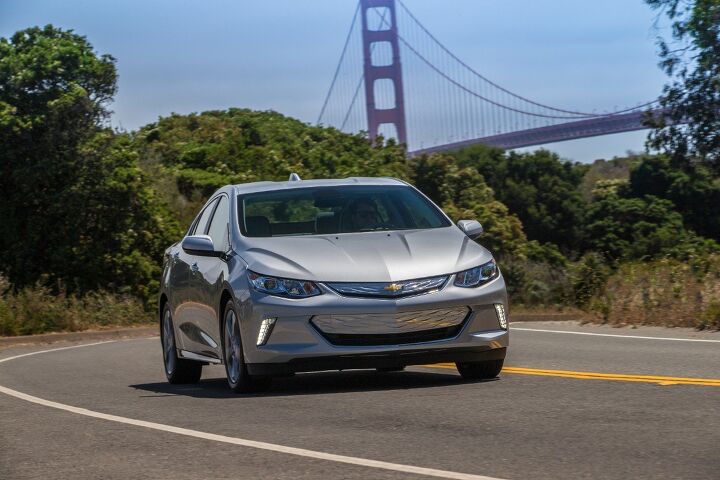









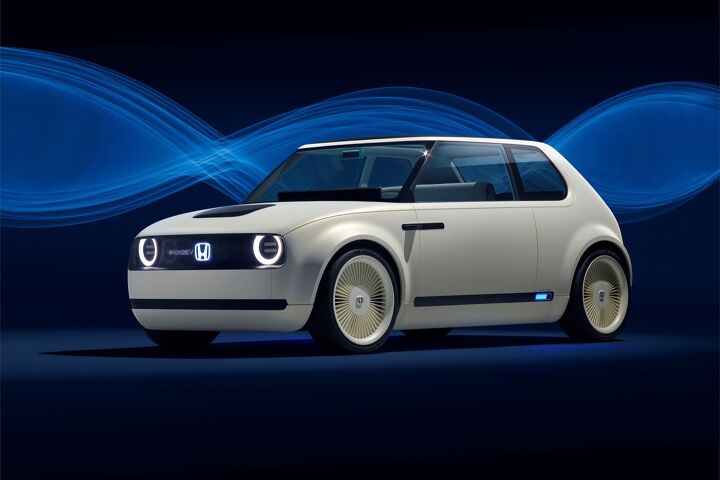

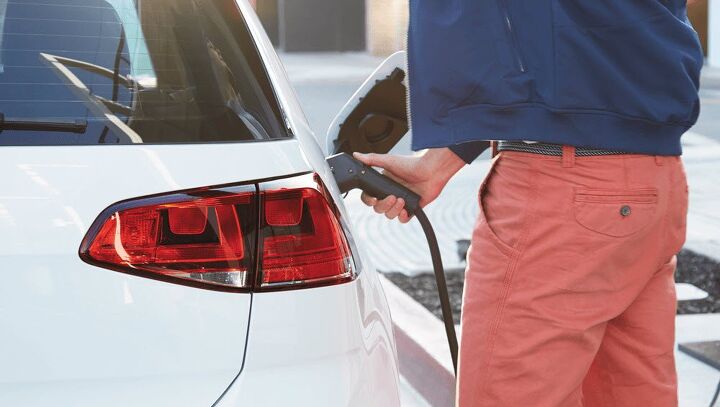
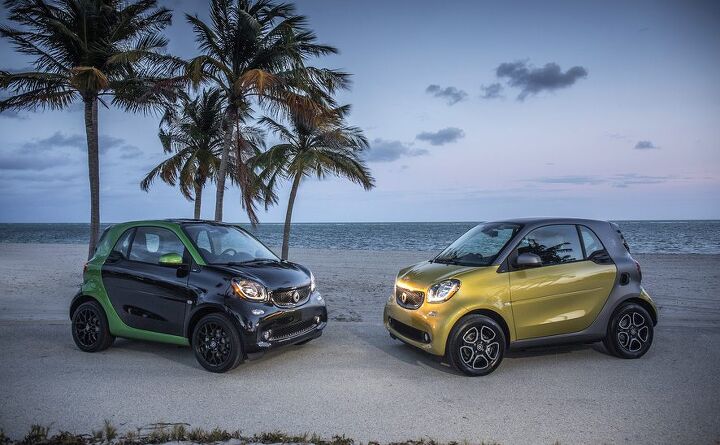




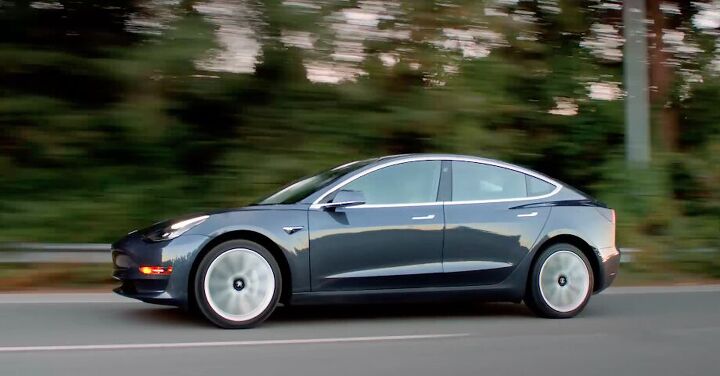




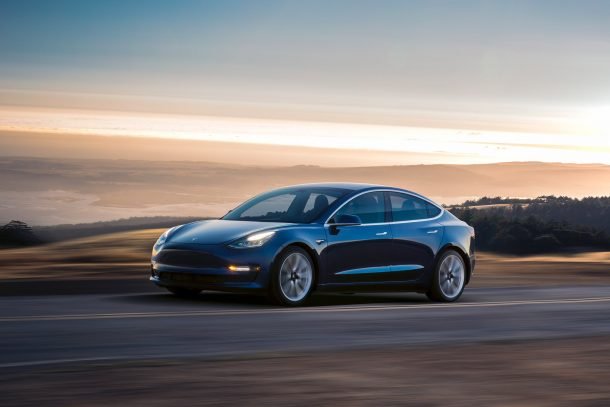
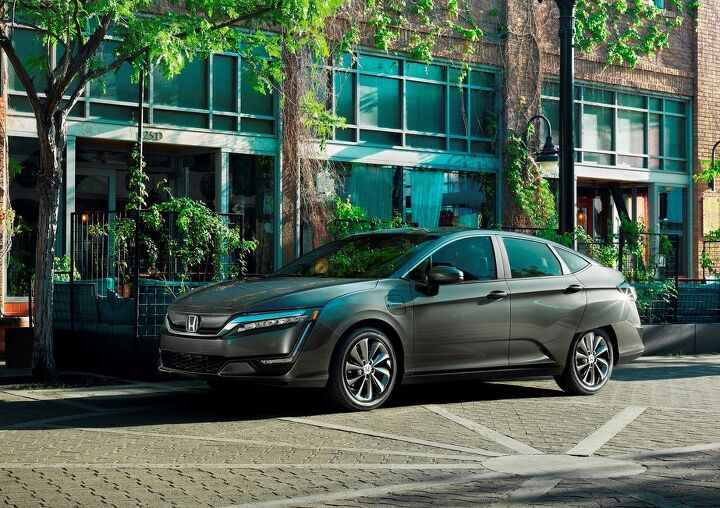


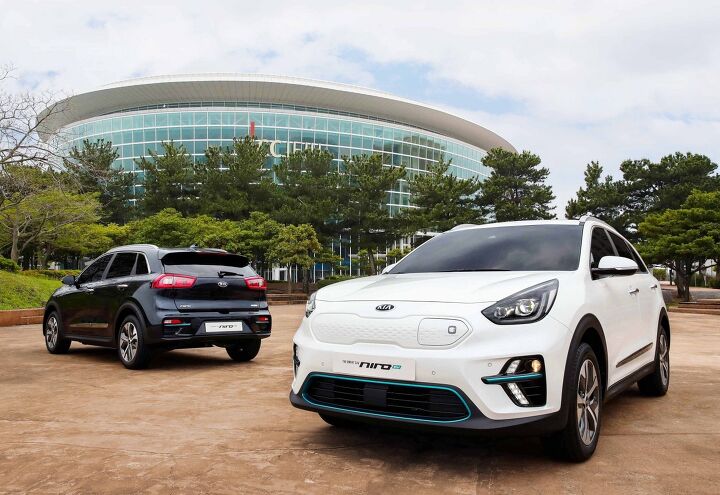



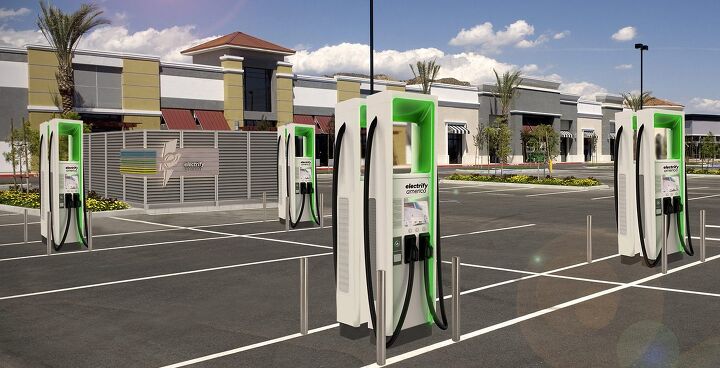




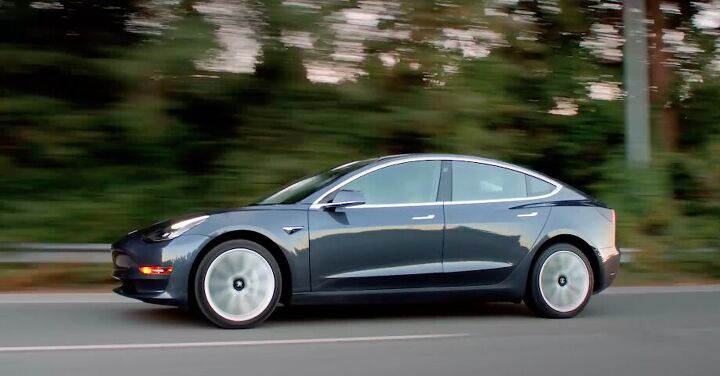


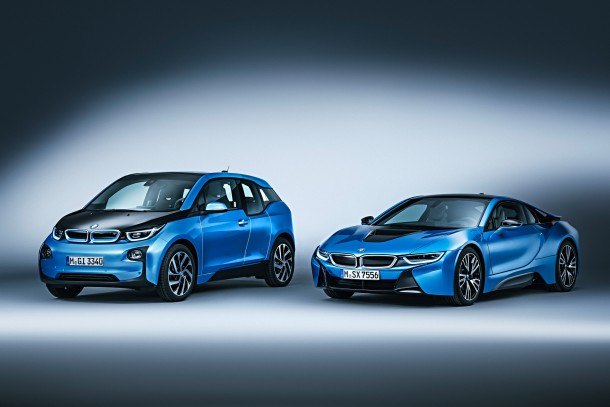




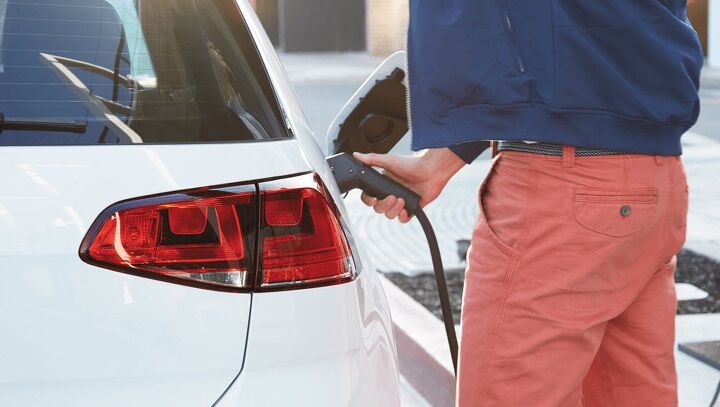
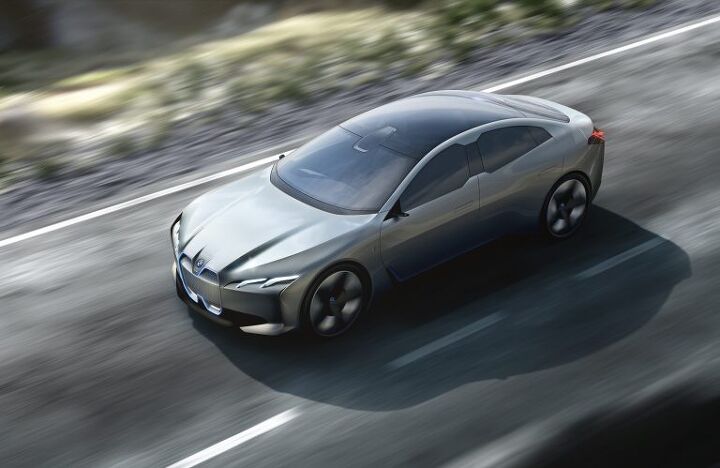













Recent Comments